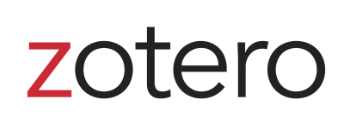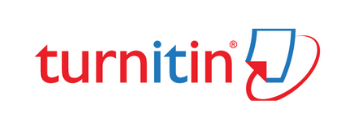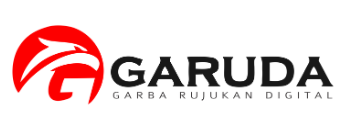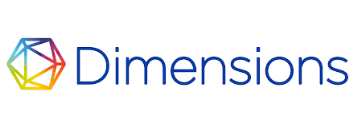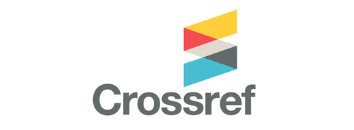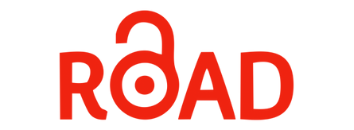Back and Forth of Open Innovation: Outstanding Issues and Future Research Works
DOI:
https://doi.org/10.24002/kinerja.v24i1.3226Abstract
This paper reviews the concept of open innovation compared to closed innovation. It starts with contrasting two papers about open innovation and discusses point of view from both papers and reveals outstanding issues from them. This paper continues with presenting issues about open innovation from various angles, such as classical organizational mechanism and theory, funding and commercialization, collaboration and intermediary agent role, as well as security and good governance conduct practice. Throughout the discussion process, it appeared some issues have been confirmed while some issues are still in large debate. This paper summarizes the unresolved issues into several potential research theme to be investigated further.
Keywords: closed innovation, future research work, innovation topics, open innovation, open issuesReferences
Biegelbauer, P., 2016. How different forms of policy learning influence each other: case studies from Austrian innovation policy-making. Policy Studies, 37(2), pp.129–146.
Burt, R.S., 2004. Structural holes and good ideas. American Journal of Sociology, 110(2), pp.349–399.
Caridi-zahavi, O., Carmeli, A. & Arazy, O., 2016. The influence of CEOs ’ visionary innovation leadership on the performance of high-technology ventures: The mediating roles of connectivity and knowledge integration. Journal of Product Innovation Management, 33(3), pp.356–376.
Chang, L., Cheng, M. & Trotman, K.T., 2008. The effect of framing and negotiation partner’s objective on judgments about negotiated transfer prices. Accounting, Organizations and Society, 33, pp.704–717.
Chesbrough, H.W., 2003. The era of open innovation. MIT Sloan Management Review, 44(3), pp.34–41. Available at: http://dialnet.unirioja.es/servlet/articulo?codigo=2316408.
Culnan, M.J. & Williams, C.C., 2009. How ethics can enhance organizational privacy: Lessons from the ChoicePpoint and TJX data breaches. MIS Quarterly, 33(4), pp.1–15.
Curry, E. & Donnellan, B., 2014. Implementing sustainable IT strategy: case of Intel. Journal of Information Technology Teaching Cases, 4(1), pp.41–48. Available at: http://dx.doi.org/10.1057/jittc.2014.2.
Dutt, N., Vidal, E. & Mcgahan, A., 2016. How open system intermediaries address institutional failures: The case of business incubators in emerging-market countries. Academy of Management Journal, 59(3), pp.818–840.
Fang, C., Liao, X. & Xie, M., 2016. A hybrid risks-informed approach for the selection of supplier portfolio. International Journal of Production Research, 54(7), pp.2019–2034.
Gao, L., 2015. Long-Term Contracting : The Role of Private Information in Dynamic Supply Risk Management. Production and Operations Management, 24(10), pp.1570–1579.
Granovetter, M.S., 1973. The strength of weak ties. American Journal of Sociology, 78(6), pp.1360–1380.
Gulati, R., 2008. Network location and learning: The influence of network resources and firm capabilities on alliance formation. Strategic Management Journal, 20(5), pp.397–420.
Hallen, B.L. & Rosenberger, J.D., 2014. How do social defenses work? A resource dependece lens on technology ventures, venture capital investors, and corporate relationships. Academy of Management Journal, 57(4), pp.1078–1101.
Hedlund, G., 1994. A model of knowledge management and the N-form corporation. Strategic Management Journal, 15, pp.73–90.
Hossain, M., 2013. Open innovation: so far and a way forward. World Journal of Science, Technology and Sustainable Development, 10(1), pp.30–41.
Indarti, N. & Wahid, F., 2013. How do Indonesian industries perceive university-industry collaboration? Motivations, benefits and problems. International Journal of Technology Transfer & Commercialisation, 12(1), pp.157–171.
Kach, A., Azadegan, A. & Wagner, S.M., 2015. The in fluence of different knowledge workers on innovation strategy and product development performance in small and medium-sized enterprises. International Journal of Production Research, 53(8), pp.2489–2505.
Kasatova, A.A., Vagizova, V.I. & Tufetulov, A.M., 2016. Stages of biotechnology commercialization in the system of interaction between financial and innovative industrial structures. Academy of Strategic Management Journal, 15(Special Issues 1), pp.191–198.
Khosravi, A., 2016. Business process rearrangement and renaming: A new approach to process orientation and improvement. Business Process Management Journal, 22(1), pp.116–139.
Kozan, M.K. & Akdeniz, L., 2014. role of strong versus weak networks in small business growth in an emerging economy. Administrative Sciences, 4, pp.35–50.
Liao, J., Welsch, H. & Stoica, M., 2003. Organizational absorptive capacity and responsiveness: An empirical investigation of growth-oriented SMEs. Enterpreneurship Theory and Practice, Fall, pp.63–86.
Mamavi, O., Meier, O. & Zerbib, R., 2015. Alliance management capability: the roles of alliance control and strength of ties. Management Decision, 53(10), pp.2250–2267.
Nonaka, I., 1991. The knowledge creating company. Harvard Business Review, 69, pp.96–104.
Omri, W., 2015. Innovative behavior and venture performance of SMEs: The moderating effect of environmental dynamism. European Journal of Innovation Management, 18(2), pp.195–217.
Ren, F.E.I. & Dewan, S., 2015. Industry-level analysis of information technology return and risk: What explains the variation ? Jpurnal of Management Information Systems, 32(2), pp.71–103.
Scarbrough, H., Robertson, M. & Swan, J., 2015. Diffusion in the face of failure: The evolution of a management innovation. British Journal of Management, 26, pp.365–387.
Schroll, A. & Mild, A., 2012. A critical review of empirical research on open innovation adoption. Journal fur Betriebswirtsch, 62, pp.85–118.
Shibeika, A. & Harty, C., 2016. Diffusion of digital innovation in construction: a case study of a UK engineering firm. Construction management and economics, 33(5/6), pp.453–466.
Shin, K., Kim, S.J. & Park, G., 2016. How does the partner type in R&D alliances impact technological innovation performance ? A study on the Korean biotechnology industry. Asia Pacific Journal of Management, 33(1), pp.141–164.
Suarez, F.F., 2005. Network effects revisited: The role of strong ties in technology selection. Academy of Management Journal, 48(4), pp.710–720.
Tiwana, A., 2008. Do bridging ties complement strong ties? An empirical examination of alliance. Strategic Management Journal, 272(April 2002), pp.251–272.
Trott, P. & Hartmann, D.A.P., 2009. Why “Open Innovation” is old wine in new bottles. International Journal of Innovation management, 13(4), pp.715–736.
Ulrich, D. & Barney, J.B., 1984. Perspectives in organizations: Resource and dependence, efficiency, population. Academy of Management Review, 9(3), pp.471–481.
Un, C.A. & Asakawa, K., 2015. Types of R&D collaborations and process innovation: The benefit of collaborating upstream in the knowledge chain. Journal of Production and Innovation Management, 32(1), pp.138–153.
Vasudea, G. & Anand, J., 2011. Unpacking absorptive capacity: A study of knowledge utilization from aliance portfolios. Academy of Management Journal, 54(3), pp.611–623.
Vega-jurado, J. et al., 2015. Integrating technology , management and marketing innovation through open innovation models. Journal of Technology Management and Innovation, 10(4), pp.85–91.
Voegtlin, C. & Scherer, A.G., 2017. Responsible innovation and the innovation of responsibility: governing sustainable development in a globalized world. Journal of Business Ethics, 143, pp.227–243.
Weigelt, C. & Shittu, E., 2016. Competition, regulatory policy, and firm’s resource investments: the case of renewable energy technologies. Academy of Management Journal, 59(2), pp.678–704.
Yström, A., Aspenberg, H. & Kumlin, A., 2015. Exploring the creative climate in an open innovation arena. European Journal of Innovation Management, 18(1), pp.70–85. Available at: http://dx.doi.org/10.1108/EJIM-08-2013-0085.



